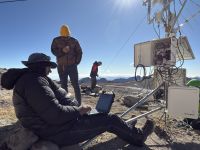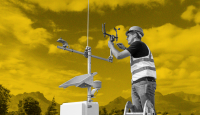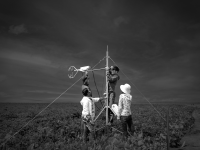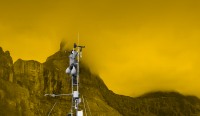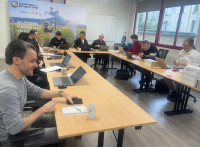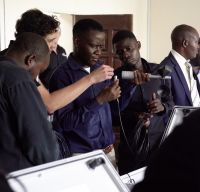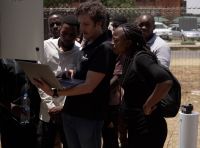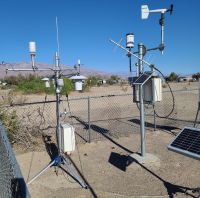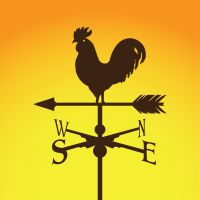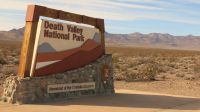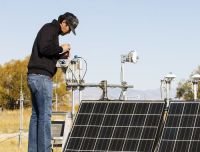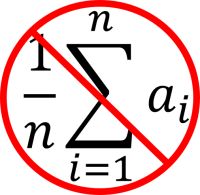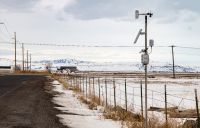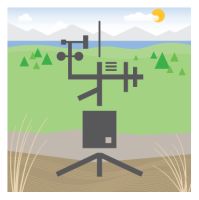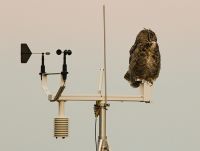Weather Topics Your source for weather-related articles
Displaying 1 - 20 of 25 articles
地域ごとの洞察から世界基準まで:自分に合った気象観測所の選び方
著者: Jamie McDonald | 最終更新日: 12/01/2025 | コメント: 0
気象や環境観測においては、単一の気象観測所の規模ではあらゆるシナリオに対応できません。単一の研究拠点を運営する場合でも、地域ネットワークに拡大する場合でも、あるいは全国規模の気象観測ネットワークを管理する場合でも、適切なタイプの気象観測所を選択することが大きな違いを生みます。 Campbell Scientificでは、コンパクトなIoT(モノのインターネット)ステーションから、世界気象機関(WMO)の各国気象サービスガイドラインに準拠した本格的なステーションまで、幅広いレベルのシステムを設計しています。しかし、どのレベルがお客様にとって最適なのか、どのように判断すればよいのでしょうか?この記事では、Campbell Scientificの自動気象ステーション(AWS)の3つの主要なレベルについて解説し、お客様の測定ニーズに最適なソリューションを見つけるお手伝いをいたします。 IoTベース スケーラブル 大規模展開に適した研究グレード プロジェクトに適したステーションのサイズを見つける モニタリングのニーズはそれぞれ異なります。プロジェクトによっては、小型観測所を用いて少数の地点で迅速かつ低コストで洞察を得ることが求められる一方、国または世界規模の観測ネットワークに供給するために、継続的な研究レベルのデータが必要となる場合もあります。 適切なシステムを選択するには、いくつかの重要な要素を考慮する必要があります。 測定の忠実度:観察にはどの程度の精度と信頼性が必要ですか? スケーラビリティ:これはスタンドアロン ステーションですか、それとも成長中のネットワークの一部ですか? 基準とコンプライアンス:データは科学的研究や運用予測および早期警告に使用されますか? 接続性:どのような通信方法が利用可能ですか? 携帯電話、衛星、イーサネット、あるいはその他でしょうか? コストと生涯価値:ハードウェアだけでなく、メンテナンス、キャリブレーション、データ管理にかかる予算はいくらですか? これらの質問を念頭に置いて、さまざまな目的のための Campbell Scientific 気象ステーションの 3 つの例を詳しく見てみましょう。 Tier 1: IoTベースの気象ステーション|スマート、シンプル、そして俊敏 複雑な設定なしで信頼性の高いデータが必要な場合は、IoT対応の気象ステーションが賢明な出発点です。これらのコンパクトで費用対効果の高いシステムは、Campbell Scientificの堅牢なセンサーと、シンプルなプラグアンドプレイのストレージおよび接続性を備えており、正確なローカルデータをCampbellCloud™ダッシュボードに直接提供します。 シングルセンサー向け Aspen™10 IoT エッジデバイス はコンパクトで導入も簡単です。ソーラーパネルを内蔵しているため、別途電源を用意する必要がなく、10分以内にセットアップしてCampbellCloudに接続できます。コーディングは不要です。 ClimaVue™50 G2 などの互換性のあるSDI-12気象センサーを接続するだけで、IoTに関するWikipediaのページを読むよりも短い時間で、あらゆる気象データを簡単に入手できます。 シングルセンサー向け Aspen 10 IoT エッジデバイス おすすめ: Aspen 10 とそのセンサーの組み合わせについて詳しくご覧ください。 これらのステーションは次のような場合に最適です。 既存のネットワークの空白を埋める スマートシティ 大規模な気象観測所には適さない場所からの超ローカル気象データ 教育または研究プロジェクト パイロット監視サイトまたは短期展開 なぜ機能するのか: 手頃な価格で迅速に導入可能:インストールが簡単なので、数分以内にデータの収集を開始できます。 クラウド対応:統合された通信プロトコルにより、CampbellCloud に直接接続してデータの視覚化と操作が可能になります。 低価格:技術的な知識は必要なく、低価格でコンパクトかつ強力なパッケージである IoT ステーションは、データが最も必要な場所に迅速に導入するのに最適です。 考慮すべき事項: これらのステーションには、本格的な AWS またはメソネット システムと比較すると、センサー スイートが限られています。 タワーの高さが低いと、風関連の測定に影響する可能性があります。 これらのステーションは、WMO または全球基本観測ネットワーク (GBON) に準拠することを目的としたものではありません。 ベースライン気象データを収集したり、微気候を監視したり、スケールアップする前に新しいサイトを検証したりする場合は、これが適切な層になる可能性があります。 Tier... 続きを読む自動気象ステーション(AWS)の初心者向けガイド
著者: Aspen Nielsen | 最終更新日: 11/10/2025 | コメント: 2
気象が意思決定、安全、生活、そして研究に影響を与えるとき、推測の余地はありません。現代社会は、正確な気象情報を含むデータに依存しています。「データに基づく意思決定」はしばしば流行語のように扱われますが、現場では、不確実な状況下での対応と、自信を持って準備を整えることの違いを意味します。 ここで、自動気象ステーション (AWS) の出番です。これらの堅牢なシステムは、厳しい環境でも継続的かつほぼ独立して動作するように構築されており、常時監視を必要とせずに正確な気象データを収集します。 この記事では、AWSを構成するコンポーネントとその重要性、そしてデータロガーからセンサー、ソフトウェアに至るまで、主要な計測機能について解説します。まだ検討段階の方でも、導入の準備が整った方でも、このガイドは気象測定を効果的に活用するための出発点となるでしょう。 自動気象観測所とは何ですか? AWSは、土壌、表層水、大気データなどの環境条件を、人的介入を最小限に抑えながら、高精度で継続的に監視・記録するように設計されたシステムです。多様なセンサーを搭載したAWSは、農業、道路気象、環境研究、悪天候監視、航空など、様々な用途において、情報に基づいた意思決定を支援する正確なリアルタイムデータを提供します。 AWS ソリューションは、データの収集と転送の両方を自動化することで、信頼性の高い 24 時間体制の洞察を提供し、ユーザーが変化する状況に積極的に対応できるようにします。 ほとんどの AWS セットアップには、次のようないくつかの主要コンポーネントが含まれています。 センサー– 気温やフラックスから降水量や視程まで、Campbell Scientific は、環境、インフラストラクチャ、再生可能エネルギーのアプリケーション向けに、堅牢で信頼性の高いさまざまなセンサーを提供しています。 データロガー– データロガーはAWS全体の頭脳であり、センサーからの測定値を収集する役割を担います。一部のデータロガーには、セルラー、Wi-Fi、イーサネット接続などの通信オプションが組み込まれています。 電源– 気象ステーションを継続的に稼働させるには、電源が不可欠です。電力要件は、センサーの選択、AWSの設置場所、その他の要因によって大きく異なります。必要な電力が不明な場合は、営業エンジニアにご相談ください。電力予算についてご説明いたします。 計測機器を過大な電力から保護するには、様々な方法があります。サージ保護、避雷器、充電レギュレータ、あるいはこれら3つを組み合わせた方法など、いずれの場合でも、計測機器を保護するための積極的なアプローチが一般的に推奨されます。 ソリューションによっては、ソーラーパネルとバッテリーの組み合わせが必要な場合もあれば、有線電源が必要な場合もあります。お客様の測定ニーズに合わせて最適なソリューションをご提案できるよう、セールスエンジニアがお手伝いいたします。 通信/テレメトリ機器– データロガーからデータを手動で収集する場合でも、携帯電話、イーサネット、無線、Wi-Fi、衛星経由で通信する場合でも、データの受信方法を考慮することは AWS 設計の重要な要素です。 取り付け機器と筐体– 適切な三脚、タワー、クロスアーム、筐体を選択することで、計測機器の安定性と保護を確保できます。正しい取り付け手順も、正確な測定を保証する上で非常に重要です。 ソフトウェア– データロガーのプログラミング、データ管理、可視化にはソフトウェアを使用し、実用的な洞察を提供します。CampbellCloud™からLoggerNet、さらにはアプリケーション固有のソフトウェアオプションまで、Campbell Scientificは豊富なソフトウェアオプションをご用意しており、お客様のニーズに合わせた最適なソリューションを提供します。 主要な測定項目とその重要性 特定のニーズに応じて監視ステーションにさまざまなタイプのセンサーを追加できますが、このセクションでは、環境監視で最もよく使用されるセンサーのいくつかに焦点を当てます。 気温センサー– AWSの中核コンポーネントとみなされることが多い気温センサーは、正確な気温測定によって他の多くのセンサーの測定値をサポートします。Campbell Scientificのすべての気温センサーには、互換性のある日射シールドの使用が推奨されます。おすすめ: 世界気象機関(WMO)の温度仕様を満たす必要がありますか?WMOガイドラインが重要な理由と、それを達成、あるいはさらに上回る方法についての詳細なガイドについては、「0.1℃の挑戦:WMOの推奨事項を満たす温度センサーの熱」をご覧ください。 気温・相対湿度(RH)センサー– これらのセンサーは、2つの測定項目を1つのデバイスに統合することで、省スペースとコスト効率を実現します。これらのセンサーには、互換性のある日射シールドのご使用をお勧めします。 気圧センサー– これらのセンサーは高精度で大気圧を測定し、天気予報、安全、環境モニタリングに関連する変化の検知に役立ちます。気圧センサーは、損傷を防ぐため、通気孔のある筐体内に設置する必要があります。 降水センサー– さまざまな設計があり、ほとんどは液体の降水量 (雨) を測定しますが、加熱モデルは固体 (雪など) も検出できます。 土壌水分センサー– これらのセンサーは土壌の体積水分含有量(VWC)を測定します。一部のセンサーは土壌温度と電気伝導率も測定します。設置要件は土壌によって異なります。硬い土壌や岩の多い土壌では、オーガーや設置ロッドなどの特殊な工具が必要になる場合があります。 日射センサー– 日射センサーには様々な種類があり、それぞれスペクトル範囲とISO規格が異なります。日射センサーを取り付ける際には、取り付けスタンドの使用をご検討ください。 風速センサー– 風速、風向、またはその両方を測定するために使用されます。風速センサーを選択する際には、環境条件と必要な測定精度を考慮してください。 既存のAWSまたはデータロガーとのセンサーの互換性は異なる場合があるため、セールスエンジニアにご確認いただくことをお勧めします。何が機能するかを確認したり、考慮すべきその他の詳細についてご相談いただけます。 データロガー: AWS を支えるインテリジェンス あらゆる AWS またはデータ取得システムの中心となるのはデータロガーです。データロガーは、接続されたセンサーからのデータを継続的に収集、処理、管理できるようにシステム全体を機能させる重要なコンポーネントです。 データロガーは、プログラムされた間隔で測定値を収集した後、情報をローカルに保存するか、有線または無線通信チャネルを使用してデータ管理システムに送信します。これにより、農業、気象、水文学、環境モニタリングなどのアプリケーション分野における意思決定を支援する、リアルタイム監視、長期的な傾向分析、自動アラートが可能になります。 今日のデータロガーは非常に柔軟でプログラム可能です。特定の条件に基づいてアラートを発するなど、複雑なタスクにも対応できるようカスタマイズ可能です。この適応性により、過酷な屋外環境から管理された産業現場まで、あらゆる用途に最適です。 データロガーを選択するときは、アプリケーションに最適なものを見つけるために、次の要素を考慮すると役立ちます。 入力– データロガーがサポートできるセンサーの数とタイプ(アナログ、デジタルなど)を決定します。 スキャンレート– データロガーがデータをサンプリングできる速度と頻度を定義します 動作温度範囲–... 続きを読む見えないものを見る:渦流測定を最適化する3つのベストプラクティス
著者: Aspen Nielsen | 最終更新日: 10/14/2025 | コメント: 0
あなたの周りには、肉眼では見えないものは何がありますか? この質問を聞くと、最先端の望遠鏡でしか見られない遠方の銀河の画像を思い浮かべるかもしれません。あるいは、特殊なカメラでしか見られない赤外線や紫外線を思い浮かべるかもしれません。理科の授業で顕微鏡を使って観察する微生物を思い浮かべるかもしれません。 しかし、微気象学者であれば、おそらく地表フラックスを思い浮かべるでしょう。私たちの目には見えないものの、常に存在しています。 フラックスの測定は、センサーを設置して立ち去るほど単純ではありません。現場で働いた経験のある人なら誰でも、小さな見落としがデータの質を左右することを知っています。 これは特にミクロ気象学において顕著であり、渦共分散法などの手法を用いて、地表と大気間のエネルギーや水、二酸化炭素、メタンなどのガスの交換を定量化します。フラックスとは、特定の面積と時間におけるエネルギーまたは質量の移動です。大気中のフラックスは主に様々な大きさの乱流渦によって駆動されるため、測定値は機器の設計に大きく左右されます。たとえわずかな測定誤差であっても、時間の経過とともに蓄積されたり、生データの集中的な処理工程を通じて伝播したりし、最終的に報告されるフラックス値にバイアスが生じる可能性があります。 Campbell Scientificのミクロ気象学主席アプリケーションエンジニアであるエドワード・スウィアテック氏との最近の会話の中で、現在利用可能なセンサーを用いて渦相関観測所の構成を最適化する方法について深く検討しました。このブログ記事では、その検討事項の一部をご紹介します。 ヒント 1: アプリケーションに最も適した渦共分散システム設計を選択します。 あなたのアプリケーションには、オープンパス渦共分散システムとクローズドパス渦共分散システムのどちらが適しているでしょうか?この問いに答えるために、私たちは「状況によって異なる」という悪名高い工学格言を使います。 オープンパス型とクローズドパス型のガス分析装置には、それぞれ異なる利点とトレードオフがあります。以下の表は、それぞれの設計の一般的な利点と欠点をまとめたものです。 メリット デメリット オープンパス 使いやすい 簡単に導入可能 優れた周波数応答 低電力需要 低コスト 環境汚染の影響を受けやすく、データセットにギャップが生じる 潜在的な流れの歪み クローズドパス 環境汚染を受けにくい 流れの歪みの低減 頻繁な雨や霧でも優れたパフォーマンスを発揮 ガスヘッドを取り外すことなくゼロおよびCO2スパンを実行可能 複雑なインストール 周波数応答が悪い 電力需要の増加 コストが高い ご存知のとおり、渦の大きさは地表からの距離に応じて異なります。 地表付近では、乱流は高周波渦、つまりより小さな渦によって支配されます。オープンパス渦共分散センサーは、一般的に周波数スペクトルの高域で優れた周波数応答を示すため、小さな渦をより正確に測定でき、農地や在来種の草地などの低樹冠生態系に適しています。 スペクトルの反対側、つまり森林の樹冠の上など、大きな渦が支配的な場所では、閉経路の渦共分散システムが理想的である可能性があります。 ヒント #2: 渦共分散測定で真のタイミング精度を実現します。 想像してみてください。素晴らしいコンサートホールに座り、世界クラスのオーケストラの演奏を聴いています。交響曲は弦楽セクションの豊かな音色で始まり、オーボエとトランペットがシームレスに繋がって、それぞれの音符が完璧に調和しています。そしてスネアドラムが加わりますが、一拍一拍が遅れています。途端にハーモニーが崩れ、音楽が…違和感を覚えます。 同様に、渦共分散システムも同時に測定を行う必要があります。渦共分散法はその名の通り、2つの量(鉛直風速とスカラー(温度とガス)の変動)がどのように同時に変化するかを測定します。共分散の大きさはフラックスの強度を表し、符号はフラックスの方向を示します。 同時測定を行わない場合、共分散が過小評価され、フラックスが過小評価され、結果として不正確なデータとなります。同期測定の重要性については、Fratiniら (2018) で解説されています。Swiatek1氏はさらに、「同時測定が不可能であれば、すでにデータは破損している」と述べています。さらに、同時測定を確実に行うには3つの方法があると説明しました。 推奨:共通の電子機器で測定可能な音波風速計とガス分析計を使用します。あるいは、GPS(全地球測位システム)など、時間基準に合わせて継続的に調整できる内部クロックを備えた計測機器を使用します。これにより、測定が実質的に同時に行われることが保証されます。 代替案- データ収集システムからの測定トリガーコマンドをサポートするスタンドアロンの音波風速計とガス分析計を使用します。このコマンドは、ドリフトしやすい機器のクロックに頼るのではなく、両方のセンサーの測定サイクルを駆動します。 最も不利な方法– 独自の内部クロックで動作するスタンドアロンの音波風速計とガス分析装置を、最も高速な測定周波数と出力周波数で使用します。すべてのクロックは時間の経過とともにドリフトするため、これら2つのセンサーからの測定が同時に行われることを保証することはできません。 ヒント #3: 流れの歪みを最小限に抑えるには、水平対称のセンサーを使用します。 渦共分散センサーは乱流を測定します。センサーを現場に設置すると、その存在自体が風速場(平均流と乱流の両方)に影響を与えます。センサー、取り付け金具、そしてタワーによって引き起こされる流れの歪みを軽減する唯一の方法は、乱流センサーを卓越風の方向に向けて設置することです。 現場でのセンサー設置を効率化するには、センサー設計の改良が不可欠です。センサー設計において重要な考慮事項は、Wyngaard (1988) が示唆しているように、超音波分析計とガス分析計の両方において水平対称性を確保することです。水平対称に設計されたセンサー2、は、平均気流を機器の上部と下部に対称的に分割し、センサーの形状に起因する平均気流の歪みを「打ち消す」ことができます。 目に見えないものを測定する 目に見えないにもかかわらず、フラックスは私たちの環境に大きな影響を与えています。フラックスを正確に測定するには、単に機器を設置するだけでは不十分です。センサーの慎重な選定とシステム設計、細部への配慮、そしてシステム内のあらゆるコンポーネントがデータ品質に及ぼす影響を理解することも必要です。 この記事の原則を適用することで、ミクロ気象学者は不確実性を減らし、データの整合性を保護し、地球の表面と大気の間の複雑なやり取りをさらに理解することができます。 私たちの周りの世界をより良く測定すればするほど、より良く理解できるようになります。 当社のミクロ気象学者は、研究者の皆様に可能な限り信頼性の高いデータを提供することに誇りを持っています。ぜひお気軽にご相談ください。専門家が対応いたします。 Credits: Edward Swiatek of Campbell Scientific, Inc. contributed to this article. References 1 Fratini, G., Sabbatini, S., Ediger, K., Riensche,... 続きを読むより安全な空のレシピ:航空気象のための5つの役割ベースのダッシュボード
著者: Aspen Nielsen | 最終更新日: 09/18/2025 | コメント: 0
間違った意思決定支援ソフトウェアを使用して空港を運営することは、鈍いナイフとキャンプ用ストーブでグルメな5コースの食事を準備しようとするようなものです。 技術的には可能です。 運用上、これはリスクが高く、非効率的で、必要以上にストレスがかかります。 世界中の空港から信頼されているCampbellAero™は、まるでプロ仕様のキッチンを丸ごと使えるかのようです。豊富な機能を備えた統合プラットフォームで、気象データと重要な警報をリアルタイムで一元管理します。複雑なシステム操作や、面倒な回避策は一切不要。晴天の朝でも、嵐が迫る日でも、信頼できる日々のサポートを提供します。 このブログ記事では、私たちのデータ「キッチン」をご案内し、空港での重要な意思決定を迅速に行える5つの役割ベースのインターフェースをご紹介します。まずは、CampbellAeroとは何かをご説明しましょう。 キッチンのフロアプラン: CampbellAero とは何ですか? 優れたキッチン環境の核となるのはレイアウトです。すべてが合理化され、効率的に料理を準備できます。同様に、優れた自動気象観測システム(AWOS)の核となるのは、正確なリアルタイム気象データを提供し、情報に基づいた安全判断をサポートするソフトウェアです。CampbellAeroはまさにそれです。柔軟性、拡張性、そしてコンプライアンスに準拠したソリューションで、適切なタイミングで適切な情報を提供します。 CampbellAero は、準拠性、カスタマイズ性、センサー非依存性を備え、高度な洞察力に富み、いつでも利用できます。 国際民間航空機関(ICAO)と世界気象機関(WMO)の安全要件に準拠し、多くの場合それを上回っています。 さまざまな役割に応じた独自のワークスペースを備えています (詳細は後述) メーカーを問わず、新規または既存のAWOSアーキテクチャを使用します。単一のサプライヤーへの依存を減らすことでシステムの将来性を確保し、成長と拡張の柔軟性を実現します。 リモート診断により、実用的な早期メンテナンスを実現 航空気象監視のニーズに必要なものすべてを提供します(ターンキーのプロジェクト提供ソリューションであるため) 日射量、地表温度、積雪深などのAWOS以外の計測機器を統合する機能を提供します。 5つのCampbellAeroダッシュボード, Mise en Place CampbellAeroは、単にデータを取り込むだけでなく、チームが重要な意思決定を行うために必要な情報を提供します。偉大なフランス人シェフの信条である「ミゼ・アン・プレイス(すべてを適切な場所に置く)」のように、CampbellAeroソフトウェアをご購入いただくと、ユーザーごとに厳選された5つのインターフェースが付属します。これらのインターフェースは、ノイズを遮断し、チームに必要な情報を必要な時に提供できるように設計されています。 #1 - ATCスクリーン 一つの家電製品でコンロとオーブンが一体化して使いやすいように、CampbellAeroのATCスクリーンは、単一または複数の滑走路からの映像をリアルタイムダッシュボードに統合し、航空管制官に迅速な安全判断のための明確な情報を提供します。簡単に設定できるため、あらゆる規模の飛行場に最適です。 ダッシュボードをクリックすると画像が大きく表示されます。 #2 and #3 - METARとMET REPORT画面 ダッシュボードをクリックすると画像が大きく表示されます。 METAR画面とMET REPORT画面は、まるで一つの蛇口から水が供給される二槽式シンクのように、互いに補完し合いながらも明確に独立した二つのデータ取り込みワークスペースを提供します。運用面では、航空観測員は空港全体の状況を(手動、自動、または半自動で)確認、確認、修正、報告できるだけでなく、特定の滑走路の状況にも焦点を当てることができます。このアプローチにより、ユーザーは全体像と、滑走路固有の超局所的な状況の両方に基づき、より情報に基づいた航空に関する意思決定を行うことができます。 ダッシュボードをクリックすると画像が大きく表示されます。 #4 -METの概要 MET画面は、AWOSセンサーとその他のセンサーの両方から気象データを抽出し、チャートを表示し、最新の傾向を分析するための強力なツールです。ワークフローに合わせてカスタマイズできます。いわばデータ冷蔵庫のようなもので、ICAOの要件に基づき最低30日間、運用ニーズに応じてさらに長期間、重要な情報を最新の状態に保ち、アクセスできるようにします。これにより、チームは現在の気象状況と過去の気象状況を迅速に参照し、監査、調査、長期計画の策定をサポートできます。 ダッシュボードをクリックすると画像が大きく表示されます。 #5 - 技術者画面 技術者画面は、ハイテクな煙探知機のようなものです。常にバックグラウンドで動作し、AWOSセンサーのメンテナンスの必要性をチームに通知します。さらに、技術者画面はリモート診断と定期メンテナンスを統合することでコスト削減をサポートし、メンテナンスチームは最も重要な作業に時間を費やすことができます。 ダッシュボードをクリックすると画像が大きく表示されます。 調理家電で調理、ダッシュボードで決定 キッチンによっては、炊飯器やトースターなど、調理を楽にするための家電が1台か2台余分に備えられていることがあります。キッチン用品を追加すると調理効率が向上するのと同様に、CampbellAeroは作業効率を向上させるためのオプションのダッシュボードも提供しています。12種類近くの厳選されたダッシュボードが既に用意されているほか、カスタムダッシュボードもご用意していますので、Campbell Scientificならどんな夕食にもぴったりです。 常設メニュー項目: 高品質データ 世界中の航空業界の専門家は、リスクの高い状況において、データに基づく意思決定を支援するソリューションを求めてCampbell Scientificに目を向けます。CampbellAeroは、常に(諺にあるように)充実した食材を揃えたキッチンを提供します。安全性と効率性が問われる状況では、失敗は許されないからです。 CampbellAero softwareで安全性と運用効率を向上させましょう。 機能豊富なソリューションを詳しくご覧いただくか、航空専門家にお問合せいただき、 AWOSデータの活用を開始してください。 Credits: Collin Daly of Campbell Scientific, Inc. contributed to this article. 続きを読む0.1℃の挑戦:WMO準拠の温度センサーへの熱影響
著者: Aspen Nielsen | 最終更新日: 08/22/2025 | コメント: 2
気候変動の追跡、洪水の評価、氷河後退の監視、航空機の着陸に関する重要な意思決定など、あらゆる場面で気温データが重要な役割を果たします。気温は、湿度、気圧、風向など、大気や環境の様々な条件に直接影響を与えます。正確な気温測定は、リアルタイムの意思決定だけでなく、長期的な気候監視や科学研究にも不可欠です。 しかし、ここに落とし穴があります。現在、世界中で使用されているさまざまな温度センサーによって不一致が生じており、データの正確性、信頼性、比較可能性に関して疑問が生じています。 このブログ記事では、世界気象機関 (WMO) の温度基準について説明し、これらのガイドラインに準拠するためのエンジニアリング上の課題について説明し、要件を満たすか上回る実証済みのソリューションを紹介して、世界中の温度センサーのベンチマークを高めます。 課題:WMOの気温勧告を満たす 国連の世界気象機関(WMO)は、温度センサーを含む様々な環境・気候センサーに関する勧告を策定しました。歴史的に、WMOの温度基準を満たす、あるいは上回ろうとすると、技術的な課題と非常に高いコストが伴いました。幸いなことに、近年の技術進歩により、WMOに準拠した計測が可能になり、アクセスしやすく、手頃な価格になりました。 WMO コンプライアンス基準はなぜ重要なのでしょうか? 正確な気温データは、幅広い測定システム、意思決定、そして政策立案プロセスの基盤となります。地球規模の気候が変化し続ける中、気候科学の発展は、標準化され、追跡可能で、信頼性が高く、正確な高品質なデータに依存しています。 残念ながら、世界中で気象・気候データ用のセンサーの仕様は大きく異なっており、一貫性のないデータから一貫性があり比較可能な数値モデルを作成することはほぼ不可能です。より優れた予測モデルには、より優れたデータが必要です。 高品質なモデルに供給するための高品質なデータが世界的に求められているため、WMOは環境監視システムに関する厳格なガイドラインを制定しました。しかし、市販されている多くの温度センサーは、これらの基準を満たすのに苦労しています。 長年にわたり、幅広い気温と風速範囲において、低い測定不確かさと短い時定数を両立できる温度センサーを見つけることは事実上不可能でした。そのため、研究者たちはWMOの性能期待値、つまりより良いデータを通じて公共の利益に貢献するという基準を満たすソリューションを模索していました。 WMOのガイドラインへの準拠はすべての地域で義務付けられているわけではありませんが、WMOの勧告は気温測定の品質におけるベンチマークとして広く認められています。これらのガイドラインは、気温データの正確性、信頼性、比較可能性、そして科学的堅牢性を確保するための統一基準を策定するための、世界規模の協力的な取り組みを表しています。 WMO コンプライアンス基準 ( WMO-No. 8 1に記載されており、この記事の後半で要約されています) は、いくつかの理由で重要です。 精度とトレーサビリティ– WMO準拠のセンサーは、精度、安定性、校正トレーサビリティに関する厳格な推奨事項を満たしています。これにより、特に過酷な条件下での測定の不確実性が低減されます。 地球規模のデータ比較可能性– WMOの標準規格は、世界中で測定されたデータの比較可能性と一貫性を確保します。標準化手法とセンサー仕様がなければ、ある観測所の気温データが他の観測所と整合しない可能性があり、地域的または地球規模の傾向を評価することが困難になります。 気候・気象記録の品質管理– 気候の理解、モデルの検証、政策立案の支援などに用いられる長期気候データセットは、高品質で標準化された観測データに依存しています。WMOの基準への準拠は、これらの記録の完全性と信頼性を確保するのに役立ちます。 現実世界の条件に合わせて設計– WMO 標準では、実験室条件だけでなく、環境耐久性を確保するために実際の展開要因が考慮されています。 結局のところ、WMOのコンプライアンスは単なるラベル表示にとどまりません。測定が最も重要となる場面において、耐久性、信頼性、そして精度を確保することが重要なのです。 WMO 準拠の温度センサーに関する技術的な推奨事項は何ですか? WMOの基準を満たすには、温度センサーはWMO-No. 8第2章に記載されている特定の基準を満たす必要があります。概要は以下のとおりです。 温度センサー機能 WMO 基準 測定の不確かさ ±0.1°C 以上 測定範囲 -80° ~ +60°C 校正 国内/国際基準にトレーサブル 時定数 ≤20 秒 WMO-No.8の発表後、WMOは補足的な機器及び観測方法に関する報告書(IOM 136)を作成し、基準をさらに明確化しました。IOM 136は、気温測定の「達成可能な精度」の許容範囲を±0.2℃以下に定義しました2。可能達成可能な精度とは、外部要因を考慮した上で、高品質の機器と手順を用いて実際に達成できる精度を指します。 正確な温度測定の核となるのは、WMO(世界気象機関)が達成可能な精度の推奨事項を満たすか、それを上回るセンサーです。適切に管理された設置環境であっても、現実世界の様々な要因によってセンサーの小さな誤差が加わり、測定全体が±0.2℃の許容範囲を超えてしまうリスクがあります。そのため、±0.1℃の仕様を満たすかそれを上回るセンサーを慎重に選定し、特に適切な設置と高品質で互換性のある放射線シールドを使用することで、WMO IOM 136の±0.2℃の達成可能な不確かさに関する推奨事項を満たすか、それを上回る可能性が大幅に高まります。 規格に適合したセンサー WMOの推奨値を満たす、あるいはそれを上回る手頃な価格で市販されている温度センサーを見つけることは、長年の課題でした。この課題に対処するため、Campbell ScientificはWMOの基準を満たす2つの先進的なセンサー設計、TempVue™10とTempVue™20を発表しました。 両方の TempVue モデルはスタンドアロン センサーとして WMO 規格を満たし、TempVue 10 では -80° ~ +60°C、TempVue 20... 続きを読むAWOSの説明:これらのシステムが空港の安全性と効率性をどのように向上させるか
著者: Aspen Nielsen | 最終更新日: 07/16/2025 | コメント: 0
航空専門家として、気象の安全性について考えるとき、何が思い浮かびますか? 安全な着陸のために天候の回復を待ちながら、様々な高度で増え続けるフライトを管理することを考えているかもしれません。あるいは、滑走路面に溜まる水によって航空機のブレーキ性能が影響を受けるのではないかと懸念しているかもしれません。最初に何を思い浮かべるかに関わらず、航空安全にとって最も重要でありながら、しばしば目に見えない柱の一つは、信頼できるリアルタイムの気象データです。 調査によると、2012年から2021年の間に国家運輸安全委員会(NTSB)が調査した米国の航空事故11,739件のうち、23.26%が状況、天候、現象に起因するものでした1 。これには、気圧、風、気温、湿度、天井高、視程、降水量、雷、乱気流などの環境要因が含まれます。これらはすべて、飛行の安全性と運用効率に直接影響を与える可能性のある状況です。(詳細については、NTSBの一般航空事故ダッシュボードをご覧ください。) 気象データが必要な理由 空港や航空業界の専門家にとって、気象監視は単なる数字の問題ではありません。人命、資産、そして効率に関わる問題です。離陸時間を決定するパイロット、着陸シーケンスを管理する航空管制官、給油や除氷を計画する地上クルーなど、あらゆる意思決定は正確な気象データによって左右されます。 そのため、信頼性が高く、準拠しており、将来も使用できる航空気象システムへの投資は、ミッションの成功に不可欠です。 AWOS ソリューションとは何ですか? 自動気象観測システム(AWOS)は、航空関連の気象データを監視、収集、配信するために設計されたソフトウェアとハードウェアの融合システムです。このシステムは、人命の安全確保から航空機の保護、効率的な運航の維持に至るまで、意思決定者が適切な対応を取れるよう支援します。 AWOSソフトウェア:データを行動に変える 生データだけでは不十分です。データは解析、処理、解釈され、適切なタイミングで適切な人に届けられる必要があります。AWOSソフトウェアは、次のような重要な役割を果たします。 センサーデータを統合して全体像を把握する 気象レポート(METAR、SPECIなど)の作成と配信 リアルタイム監視の有効化 国際民間航空機関(ICAO)および世界気象機関(WMO)の基準への規制遵守の確保 センサーから通信、人間が入力したデータ、システムハードウェアに至るまで、システム全体の健全性を積極的に監視します。 AWOSハードウェア:センサーとインフラストラクチャ AWOS フィールド ステーションの中心には、次のような重要な大気条件を測定するセンサー ネットワークがあります。 大気圧 気温 風速と風向 視認範囲 クラウドベース 雷検出 降水量 現在の気象状況 相対湿度 フィールド データ収集ユニット (FDCU) はこれらのセンサーに接続し、電力を供給し、読み取り値を集約し、データを AWOS サーバーに送信して処理します。 AWOS ソリューションで何を探すべきですか? AWOS を選択する際、航空専門家は通常、次の点を考慮します。 コンプライアンス – システムはICAOおよびWMOの規制に準拠または認証されていますか?また、現地の規制ニーズに合わせてシステムをカスタマイズできますか? 測定機能 – システムは必要な気象変数をすべて捕捉できますか? システムの稼働時間の最大化 – システムは、最も必要とされるときに機能するのに十分な信頼性と耐久性を備えていますか? 拡張性 – システムは空港の将来の成長や変化するニーズに適応できますか? メンテナンスとサポート – 校正、修理、ソフトウェアの更新のためのサービスはありますか? トレーニング – ベンダーはシステム価値を最大化するためにスタッフ向けのトレーニングを提供していますか? 将来性 – システムは時間の経過とともに新しいテクノロジー、センサー、またはレポート標準と統合されますか? どこに助けを求めればいいのでしょうか? 航空専門家は、信頼性の高い高品質のデータに依存して、運用効率を維持しながら人命と財産に影響を与え、それを保護する重要な決定を下します。 お客様のニーズに最適なAWOSソリューションを選択するのは、特にソフトウェアとハードウェアの両方のコンポーネントが絡む場合は、非常に困難な場合があります。正確なリアルタイムデータを提供し、厳格なコンプライアンス基準を満たしながら、管理と適応が容易なシステムが必要です。そこで私たちの出番です。 Campbell Scientific と提携するべき理由は何ですか? Campbell Scientificは、完全に統合されたエンドツーエンドのAWOSソリューションを提供することで、システム構築における推測作業を排除します。当社のプラットフォームは、信頼性、柔軟性、そして使いやすさを重視して設計されており、お客様はタイムリーで情報に基づいた意思決定に集中できます。当社の航空チームは、複雑な規制要件に対応できるようサポートとガイダンスを提供します。卓越したサポートを提供することで、あらゆる段階でオペレーショナル・エクセレンスの実現を支援します。 既存のAWOSのアップグレードでも、新しい航空気象ステーションをゼロから構築する場合でも、Campbell Scientificはお客様の成功をお手伝いします。センサー、ソフトウェア、ライフサイクルサービスに至るまで、Campbell Scientificは、包括的でコンプライアンスに準拠した統合型航空気象プラットフォームを提供し、人命の保護と運用の最適化を実現します。 AWOS ソリューションに関して Campbell Scientific とのパートナーシップから何が期待できるかを見てみましょう。 センサー非依存と柔軟性 特定のセンサーセットに縛られることを避けるため、Campbell Scientificのシステムはセンサーに依存しません。つまり、以下のことが可能です。 空港の固有の環境条件に合わせてセンサー スイートをカスタマイズします。 システム全体をオーバーホールすることなく、必要に応じてセンサーを交換またはアップグレードします。 信頼できる社内センサーを使用するか、サードパーティの機器を統合します。 この柔軟性により、AWOS... 続きを読むAtmosVue™30の仕様の詳細(実際の意味)
著者: Aspen Nielsen | 最終更新日: 06/30/2025 | コメント: 0
AtmosVue™30, のような気象センサーの仕様書を見ると、多くの数字や専門用語が記載されているのが一般的です。例えば、以下のような内容です: 現在の天気出力 背景輝度測定範 動作温度範囲 しかし、これは実際何を意味するのでしょうか? このブログ記事では、AtmosVue 30 の主な仕様を分析し、その内容を簡単な言葉で説明します 背景 はじめに、AtmosVue 30は3つの独立したセンサー: CS125 現在天気・視程センサ, CS140 背景輝度センサ, and the HygroVue™5 デジタル温湿度センサ で構成されていることをご留意ください。この記事ではAtmosVue 30のスペックシートに関する情報を共有しますが、AtmosVue 30を構成するセンサーのいずれかについて同様の情報をご希望の場合は、下記にコメントをお寄せください。 AtmosVue 30の主な仕様 報告される最大可視性 AtmosVue 30 の場合、報告される最大視程は 100 km (62.1 マイル) です。 報告される最大視程は、現在の気象条件下で、空港にいる人(パイロット、航空管制官、またはその他の航空利用者)が地上 2 メートル(6.6 フィート)の高さで水平にどれだけ遠くまで見通せるかを示します。 背景輝度測定範囲 AtmosVue 30 の場合、背景輝度の測定範囲は 0 ~ 45,000 cd/m 2です。 背景の輝度は、滑走路の照明と背景の空周辺光レベルとのコントラストの強さを理解するのに役立ちます。これは、パイロットが飛行場に着陸するときにどれだけ遠くまで見通せるかを決定する重要な測定値です。 背景の周囲光レベルは、国際照明委員会(CIE)の分光感度を用いて、人間の目で見るのと同じ波長で測定されます。言い換えれば、人間が私たち人間と同じ波長の光を「見ている」ということです。 背景輝度を用いることで、あらゆる光条件、特に低照度または低コントラスト条件における視程計算方法をどのように調整する必要があるかを判断できます。カンデラ/平方メートル(cd/m 2)で測定される背景輝度を、より大規模な計算における他の測定値と組み合わせることで、航空機の視程を決定するのに役立ちます。 現在天気出力 AtmosVue 30 の場合、1 つの出力で 57 個の SYNOP 現在の気象コードと、関連する気象飛行場レポート (METAR) および国立気象局 (NWS) の現在の気象コード、および過去の気象コードが提供されます。 世界気象機関(WMO)は、気象情報を複数の言語に翻訳することなく国際的に伝達するための標準化された手法を開発しました。この通信システムでは、SYNOPと呼ばれる数値コードが一部使用されています。SYNOPコードは一定の頻度(通常は3時間または6時間ごと)で送信され、その地点における現在の重要な気象現象をすべて記述できます。例えば:... 続きを読むIn Her Own Words: An Interview with a Recent Campbell Scientific Training Course Participant
著者: Ramatoulaye Nabi | 最終更新日: 05/23/2024 | コメント: 0
In our ongoing exploration of employee training in environmental monitoring, we turn the spotlight to the real-life experiences of those who have benefitted from Campbell Scientific's training programs. Today, we chat with Anca Tarcu, Senior Meteorological Officer at Met Éireann (The Irish Meteorological Service). Anca recently... 続きを読むHow to Equip Your Workforce for Success Through Training
著者: Vim Mistry | 最終更新日: 03/25/2024 | コメント: 0
Continuous learning in the environmental monitoring industry empowers individuals and organizations alike, fostering innovation, user engagement, and a growth mindset. If you haven’t read our “How Do You Put Learning into Action?” blog article, I encourage you to do so. In this article, we’ll shift... 続きを読むHow Do You Put Learning into Action?
著者: Vim Mistry | 最終更新日: 03/11/2024 | コメント: 0
While continuous learning in the field of environmental monitoring is important, it’s even more critical to put that learning to practical use. Understanding the benefits for both employees and organizations to stay up to date on technology, expand expertise, and improve performance is one thing.... 続きを読む4 Reasons Why Continuous Learning Is Critical for Environmental Monitoring
著者: Ramatoulaye Nabi | 最終更新日: 02/01/2024 | コメント: 0
In the ever-evolving landscape of environmental monitoring, staying ahead of the curve is not just a luxury but a necessity. As technology advances at an unprecedented pace, organizations must equip their employees with the skills and knowledge to effectively use emerging tools and navigate the... 続きを読むDeath Valley, a Year Later
著者: Dirk Baker | 最終更新日: 07/29/2022 | コメント: 9
About a year ago (May 2021), I installed a weather station next to the National Weather Service’s (NWS) official station at Furnace Creek in Death Valley National Park (California, USA). To familiarize yourself with this project, read my previous article. The purposes of this installation... 続きを読むSimplify Your Sensor Installation Using Wind Direction Offsets
著者: Jacob Davis | 最終更新日: 06/13/2022 | コメント: 0
As you may know, it can be quite challenging to perfectly align the north mark of a wind direction sensor with true north. For example, when you’re on a ladder handling tools or hanging on a tower, you don’t have a spare hand to hold... 続きを読むBut It’s a Dry Heat… like a Furnace
著者: Dirk Baker | 最終更新日: 06/21/2021 | コメント: 6
In this article, I'll share my experience collaborating on a research project to record some extreme weather conditions that may even set a world record! On August 16, 2020, the weather station located at Furnace Creek in Death Valley National Park (California, USA) recorded a temperature... 続きを読むWeather Solutions for IEC 61724-1 Class A Solar Monitoring Systems
著者: Libbie Anderson | 最終更新日: 06/29/2020 | コメント: 0
You may have heard of the IEC 61724-1 standard to promote international uniformity in PV (photovoltaic) system performance monitoring. But why was it created, and what does it mean for you? In this interview with PES (Power & Energy Solutions), Matt Perry, Technical Product Manager for... 続きを読むRelative Humidity: To Average, or Not to Average?
著者: Dirk Baker | 最終更新日: 01/30/2020 | コメント: 2
Have you ever been told not to average relative humidity (RH)? Have you ever created a data logger program with Short Cut and noticed that it does not allow you to average RH when you generate your data table? Do you know why? In this blog... 続きを読むHow to Fill the Road-Weather Information Gaps
著者: John Markham | 最終更新日: 08/13/2019 | コメント: 0
Although there have been vast improvements in our ability to gather and use road-weather data, there are still, unfortunately, significant information gaps we must fill. In this blog article, we’ll look at the issues that hinder our current data acquisition and a solution for obtaining... 続きを読むNo Compromise: Quality Weather Measurements and Simplicity
著者: Robin Deissinger | 最終更新日: 10/17/2018 | コメント: 2
Can a simplified weather station solution still provide you with good measurements? In this interview, Alan Hinckley, Senior Application Scientist-Meteorologist, shares his excitement for the ClimaVue™50 and how users of various backgrounds can benefit from its simplicity in capturing quality weather data. Alan was interviewed... 続きを読む3 New Resources to Help You Design Your Automated Weather Station
著者: Garrett Wheeler | 最終更新日: 09/27/2017 | コメント: 0
We realize that designing a custom, high-quality automated weather station to fit your needs can be challenging, as there are many considerations to keep in mind. To help you with this task, we have recently created three new resources that I’ll introduce you to in... 続きを読む6 Tips to Protect Your Weather Station from Birds
著者: Robin Deissinger | 最終更新日: 05/25/2016 | コメント: 0
You’ve got your weather station set up and running, your data is coming across just fine, and then a bird decides your station is a wonderful place to make a home. That’s great for the bird, but not so great for the performance of your... 続きを読む











